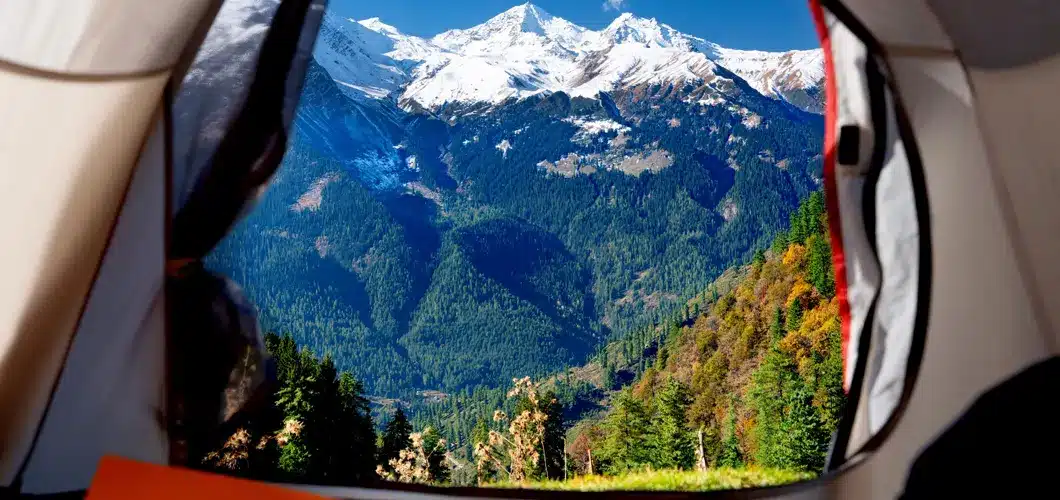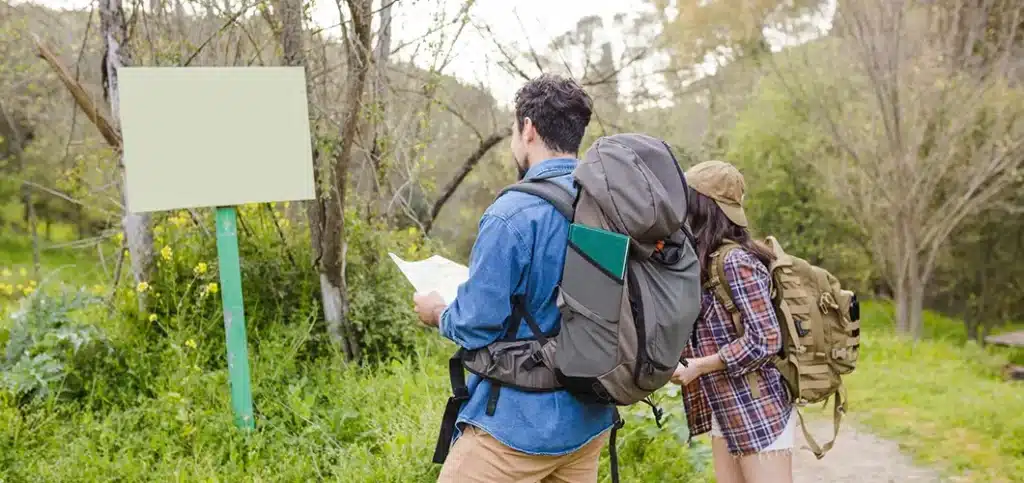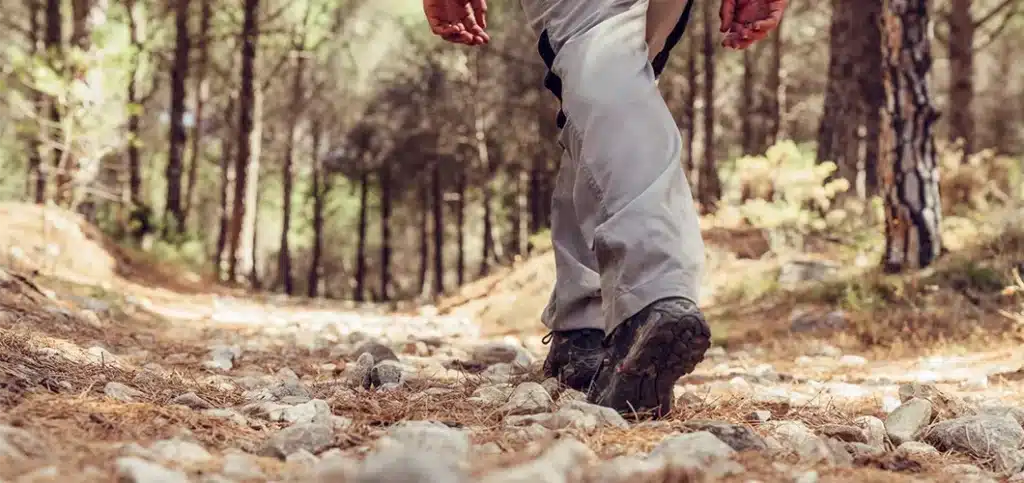

Trekking has seen a notable hike in popularity, with more than 50 million individuals worldwide choosing to hike each year. In this article, we will help beginners with the necessary advice that will help them have a fun and safe trekking experience. We will go over the fundamentals of getting ready, such as selecting the appropriate equipment and knowing proper trail etiquette. We’ll also go over safety precautions and fitness advice to assist you overcome the difficulties of the big outdoors. This article aims to give insightful trekking tips for beginners to have an amazing trek experience, regardless of whether it’s your first trek or trying to have an adventurous experience.
Part 1: Planning Your Trek

Choosing the Right Trek
Guide for the Trek
Whenever planning a trek it is always important to consider your fitness level first. Prepare for a trek that is easy and less challenging. For example, as a beginner you can take a short 1-day trek or a simple walk to any valley in Himachal, India, to judge your endurance. Slowly and gradually as your stamina improves and endurance builds embrace yourself with more adventurous treks. With some basic exercise before the trek, you can avoid any potential injury. In addition, it is equally important to consider the type of terrain and elevation of the trek.
Pick a suitable climate and location
Choosing a trek according to weather conditions is crucial for a great trek experience. Start by picking a location that matches the climate condition to your preference. On treks with hot or cold weather conditions stay conscious about the hydration needs of your body. Be mindful of a balanced diet before and during the trek to maintain health at high altitudes. Also increase drink intake by carrying fruit, protein, and energy bars. Practice a lot of cardio and muscle exercise.
Research the terrain
Before embarking on your journey, you must investigate the terrain. Begin by searching for simple hikes that match your fitness level and experience. Look for paths with moderate elevation gains, which implies climbs that aren’t too steep or lengthy. This will make your journey more pleasant and less tiresome. Check internet reviews, trail maps, and guidebooks for acceptable possibilities. These tips for trekking allows you to better prepare and provides a safer, more pleasurable hiking experience.
Prepare for Trekking Adventure
Permits and Regulations
Before setting out on your trek, research any necessary permits or restrictions for your chosen trail. Many popular trekking destinations require permits to help manage the number of visitors and preserve the natural environment. Check the official park or trail website for specific information on permits, fees, and regulations to carry along. Some areas may also have seasonal restrictions or rules about camping and campfires. Ensuring you have the correct permits helps avoid fines and supports conservation efforts.
Booking a Guide or Going Solo
When planning your trek, decide whether to hire a trekking company guide or go solo. Guided treks by a trekking company offer the advantage of local expertise, safety, and convenience, especially in unfamiliar or challenging terrains. Guides can also provide cultural insights and language assistance. However, going solo gives you more freedom and can be a rewarding personal challenge. Consider your experience level, the trail’s difficulty, and your comfort with navigation when making this decision. Both options have unique benefits depending on your needs.
Gear Checklist
Creating a detailed gear checklist is essential for a successful trek. Start with clothing: a pair of shoe, moisture-wicking layers, weather-appropriate outerwear, and a hat. Preparation for footwear should include sturdy hiking boots and comfortable socks. Backpack essentials incorporate a map, compass, multi-tool, snacks, and hydration system. Don’t forget sun protection, a flashlight, and a whistle. A well-stocked first-aid kit is crucial, with bandages, antiseptic, pain relievers, and any personal medications. Proper gear ensures safety and comfort on the trail.
Part 2: Hitting the Trail

Packing Like a Pro
Prioritize lightweight essentials and reusable products when packing for a trek. Opt for versatile, quick-drying clothing and multi-purpose gear to save space and weight. Distribute weight evenly in your shoulder bag by placing heavier items closer to your back for better balance and comfort. Follow Leave No Trace principles by minimizing your environmental impact: pack out all waste, dispose of it properly, and respect wildlife and natural habitats. Thoughtful packing ensures a more comfortable and eco-friendly trekking experience.
Trekking Techniques
Finding your pace is crucial for an enjoyable mountain trek. A trekker must listen to their body and take regular rest days to avoid exhaustion. Maintain proper walking form by using efficient techniques for uphill and downhill trekking, which helps conserve energy and prevent injury. Familiarize yourself with navigation basics, such as reading maps, and using a compass, or GPS device, to ideally stay on track and ensure safety on your chosen trail. These techniques will enhance your trekking experience and keep you safe.
Part 3: Essential Extras

Safety Considerations
When trekking, prioritize safety with sun protection: pack sunscreen, sunglasses, and a hat to shield yourself from harmful UV rays. To prevent blisters, choose proper footwear that fits well and apply blister-prevention products like moleskin or specialized socks. Be prepared for emergencies by carrying a well-stocked first-aid kit and knowing basic emergency protocols, such as how to treat common injuries and recognize signs of severe conditions. These precautions help ensure a safe and enjoyable trek.
Building Camp (if applicable)
Choosing a campsite requires knowledge of the appropriate location distance and set-up techniques. Look for flat, durable, and accessible ground away from water sources and trails to minimize impact. Practice Leave No Trace camping by minimizing your impact on the environment: pack out all trash, avoid disturbing wildlife, and leave the site as you found it. Proper campsite selection and low-impact practices help preserve natural areas and enhance the camping experience for everyone.
Wildlife Encounters
Research local wildlife to understand potential encounters and how to behave around animals. Knowing which animals inhabit the area and their behaviors can help you stay safe. Practice proper food storage by using bear-proof containers or hanging food bags to avoid attracting wildlife to your campsite. Securing your food and understanding animal behavior reduces the risk of dangerous encounters and helps protect both you and the wildlife.
Conclusion
Trekking is a rewarding adventure that allows you to connect with nature and challenge yourself. By following these tips and embracing the experience, you’ll be well on your way to unforgettable treks filled with breathtaking scenery and personal growth. Start planning your first trek today, research your destination, and gather the necessary gear. Embrace the journey and the countless benefits it offers. Adventure awaits—take the first step toward your next great trek!
